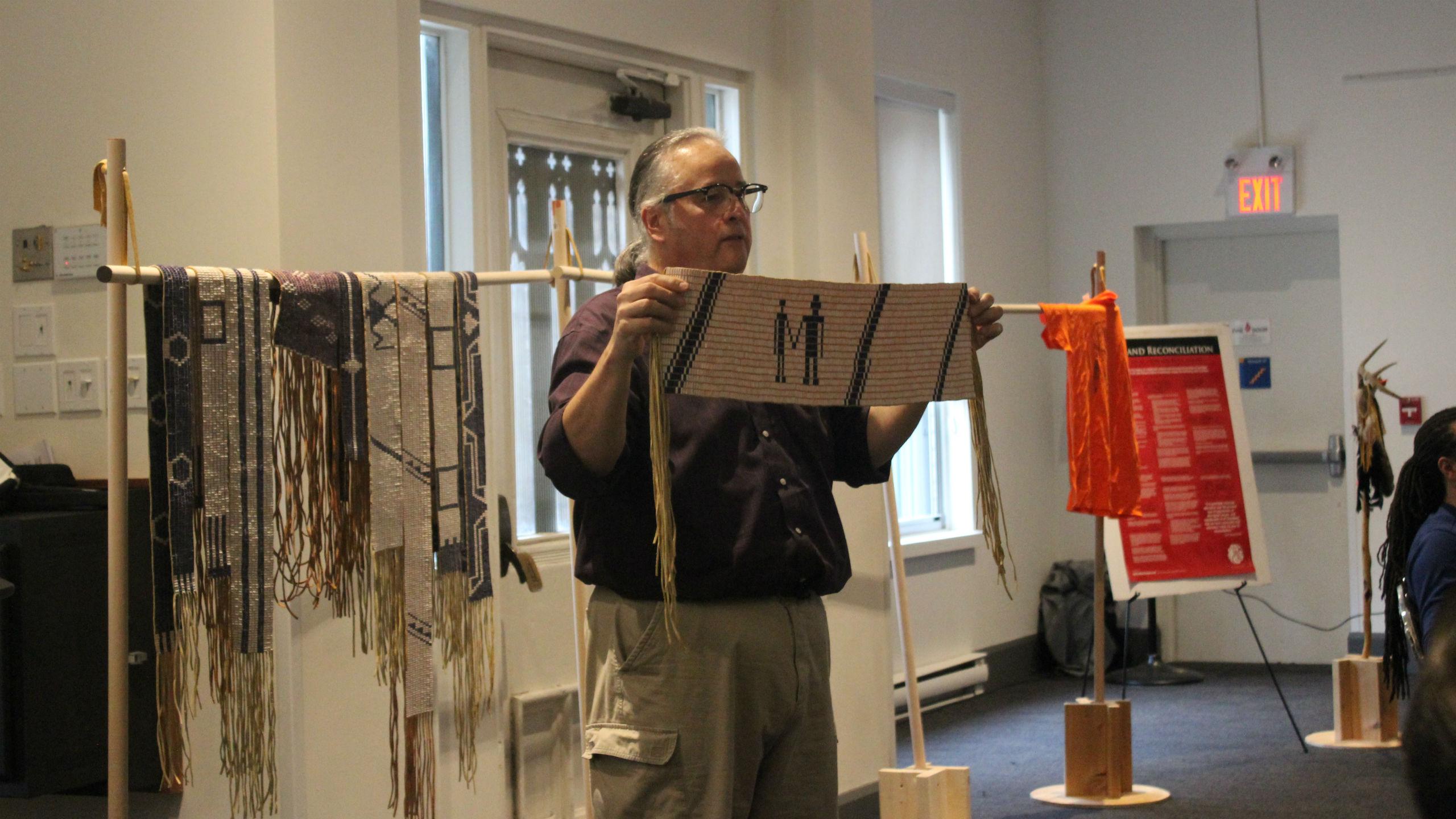By Elina Painchaud
Ryerson hosted an event on Oct. 22, discussing the rediscovery of wampum belts and how they tell the complex history of Indigenous peoples in Canada.
Brian Charles led the talk, in the participation of Ryerson’s 8th annual Social Justice week. He elaborated on this year’s theme of “the power we have” throughout his presentation. Charles is an off-reserve Band Member of the Chippewas of Georgina Island and researcher of wampum belts within Ojibwe history.
Charles defined wampum belts as, “A way of writing things down, to be able to make a record that would detail the relationship and treaties between nations.” He went on to explain that this writing system used before contact with settlers, and subsequently adopted by colonizers who participated in the system of diplomacy when first nations and settlers first made contact.
Charles spoke about the widely held belief that Indigenous peoples came from oral culture through song, storytelling and verbal communication. However, he argues that this notion is factually incorrect and was used as a way to demean the intelligence of these communities by colonial settlers.
“Things were written down, just not in English. Native peoples didn’t write things the same way that is traditionally taught in Western European descent.”
Wampum belts were one of the many ways that things were recorded and written down. They were traditionally made from beads of quahog shells and were used as a writing system. The beads also provided documentation for treaties and relationships between Indigenous peoples and settler societies.
The need to deconstruct long-held views and inaccurate facts lead the pathway to reconciliation and foraging the way forward for understanding where we come. Appreciating the land that we reside on is the power students have to move forward.











Leave a Reply